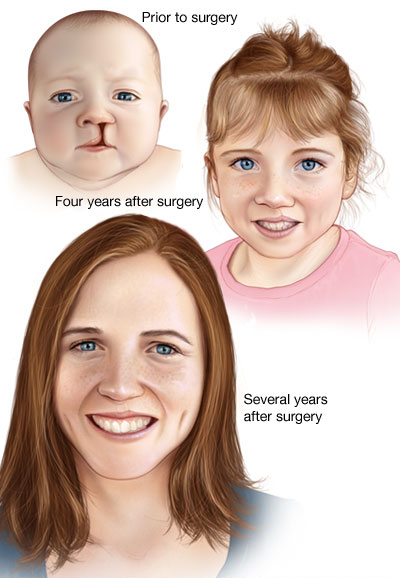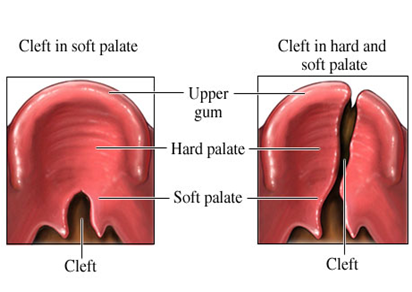Ideally, patients should be managed by a multidisciplinary team which includes:
Plastic surgeons, maxillofacial surgeons; ENT, speech and language therapists, dentists,
orthodontists, psychologists and specialist nurses. They will provide support and
treatment until the child stops growing at around 18 years old.
“Lip-nasal Adhesion” Procedure
For some children with a unilateral cleft lip, the first operation they need is
a lip-nasal adhesion. This operation is performed at about 3 months of age, and
involves:
- a simple closure of the lip
- the first stage of nasal correction
- when possible, closure of the cleft in the upper gum (this procedure is called gingivoperiosteoplasty)
Incomplete Cleft Lip
An incomplete cleft lip, either unilateral or bilateral, is usually repaired with
one operation when the child is between 3 and 5 months of age. During this operation,
the baby’s nasal asymmetry (unevenness in the shape of the nose) is also corrected.
During the repair procedure, a plastic surgeon uses the existing muscle and tissues
of the child’s lip and nose to close the cleft. Repair of a unilateral cleft lip
is typically performed in the operating room under general anesthesia. The child
will stay in the hospital for one to two nights after the operation.
Complete Cleft Lip
A child with a complete cleft lip typically needs two operations. The second operation
is a more comprehensive repair of the cleft lip and correction of the nose. This
procedure usually takes place at 5 to 6 months of age.
Post Surgery
After the operation, the child’s lip, nose and face will be swollen for a few days.
His scar may be red for several weeks. It will take 6 to 12 months for the scar
to soften and fade. Although it will never completely disappear, in time, the scar
will become difficult to see. The child’s lip and nose will be nearly normal in
appearance after the swelling and scar have subsided.
Although some children need to have another procedure on their lips and/or nose
before they begin school, or as they enter adolescence, other children never need
further surgeries.
Children whose cleft lips involve the alveolus, or gum line, typically need another
operation to help their permanent teeth come in and to make it easier for orthodontic
treatments to improve their bite and jaw function. This operation is called an alveolar
bone graft, and is usually performed when the child is 8 to 10 years old.
Cleft Palate Repair
A plastic surgeon brings together the separated muscles and tissue from the two
halves of the palate to close the opening. This procedure is performed in the operating
room under general anesthesia. The child will be in the hospital anywhere from one
to three nights after the operation.
A cleft palate is typically closed between the ages of 8 and 11 months, before a
baby makes his first attempt to speak. The plastic surgeon will discuss the best
repair plan for his needs and circumstances.
The child should be given soft foods, using the side of a soft-tipped baby spoon.
After each feeding, be sure to rinse the child’s mouth with water. Rinsing is very
important, especially for the first 10 to 14 days after surgery. The child may regurgitate
some food and liquid through his nose for up to three months after the operation.
This is normal. It takes time for the swelling to diminish and for the muscles in
the palate to begin working properly.
Approximately 5 to 15 percent of all children who have undergone a cleft palate
repair will need a second operation to correct “nasal”-sounding speech. The most
common procedure used to fix this problem is called a pharyngeal flap, which is
performed when the child is about 5 years old.





